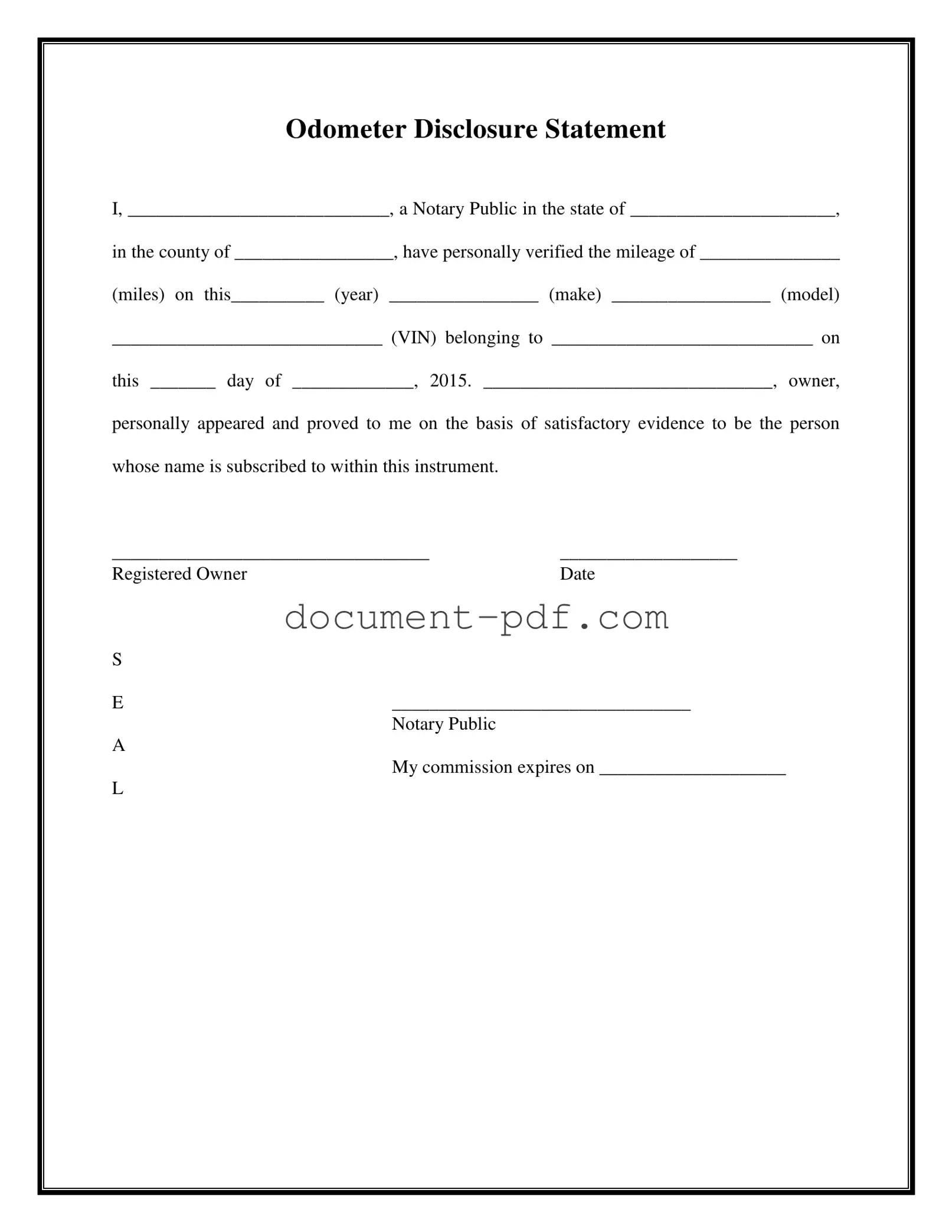The Bill of Sale is a document that serves as proof of the transfer of ownership of a vehicle from one party to another. Similar to the Notarized Odometer Statement, it includes essential details such as the vehicle's make, model, and Vehicle Identification Number (VIN). Both documents require the signature of the seller and may also need to be notarized to ensure authenticity. The Bill of Sale can also provide protection for both the buyer and seller in case of disputes regarding the transaction.
The Vehicle Title is another important document that is closely related to the Notarized Odometer Statement. The title proves ownership of the vehicle and includes details such as the VIN and the owner's name. When selling or transferring a vehicle, the title must be updated to reflect the new owner's information. Like the Odometer Statement, the title may also require notarization in some states to validate the transfer and confirm the accuracy of the information provided.
The Application for Title is a document that individuals must complete when applying for a new title for a vehicle. This form typically requires similar information as the Notarized Odometer Statement, including the VIN, make, model, and odometer reading at the time of the application. Both documents aim to ensure that the information regarding the vehicle's ownership and mileage is accurate and legally recognized.
The Vehicle Registration form is necessary for legally operating a vehicle on public roads. This document includes details about the vehicle, such as its VIN and owner information. Similar to the Notarized Odometer Statement, the registration form may require proof of ownership and accurate mileage. Both documents help maintain accurate records of vehicle ownership and usage within the state.
The Affidavit of Odometer Disclosure is a sworn statement that verifies the mileage on a vehicle. Like the Notarized Odometer Statement, this affidavit serves to protect buyers from potential fraud regarding the vehicle's mileage. It includes similar information, such as the VIN and odometer reading, and is often required when selling a vehicle to ensure transparency in the transaction.
For those seeking to establish a clear management framework for their limited liability company (LLC) in Texas, it is vital to have a well-drafted Operating Agreement. This document not only delineates the rights and responsibilities of members but also aids in avoiding disputes and miscommunication. For a comprehensive template to get started, you can visit texasformsonline.com/free-operating-agreement-template, which provides essential resources to create an effective agreement tailored to your business needs.
The Power of Attorney for Vehicle Transactions allows one person to act on behalf of another in matters related to vehicle ownership and transfer. This document can be similar to the Notarized Odometer Statement in that it often requires verification of the vehicle's details and may need to be notarized. Both documents ensure that the parties involved are legally recognized and that the transaction is conducted smoothly.
The Vehicle History Report is a document that provides a detailed history of a vehicle, including past ownership, accidents, and mileage records. While it differs from the Notarized Odometer Statement in purpose, both documents are concerned with the accuracy of a vehicle's history. The Vehicle History Report can help buyers make informed decisions, just as the Odometer Statement aims to disclose truthful information about the vehicle's mileage at the time of sale.

